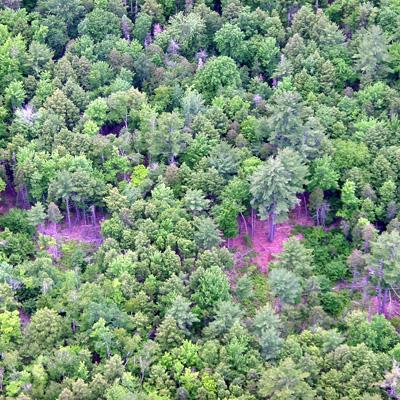Productivity and Financial Viability of Natural Disturbance-Based Management in the Acadian Forest

Concerns over loss of forest biodiversity have spurred interest in developing natural disturbance-based management systems that increase variability in forest structure and habitats. These systems mimic natural creation of gaps in the forest by harvesting small groups of trees. However, justification for these systems rarely mentions sustainable production of timber. This disconnect between ecological theory and economic reality has resulted in little on-the-ground application of these natural disturbance-based systems.
NSRC researchers used data from the Acadian Forest Ecosystem Research Program on Maine's Penobscot Experimental Forest and a computer model, called the Forest Vegetation Simulator, to compare tree growth and timber yield over time of natural disturbance-based systems to that of traditional timber harvest systems, which remove selected trees in large patches, and an unmanaged control treatment. Researchers showed that natural systems leave a wider distribution of tree sizes and a greater mix of both shade tolerant and intolerant tree species in most size classes. This suggests that natural systems could create much more structurally variable stands than uniformly applied traditional harvest systems.
Researchers determined that grouping tree removals into small gaps creates a significant amount of interior edges, allowing in more sunlight to increase growth of remaining trees and promote advance regeneration. These growth increases make natural systems comparable to traditional management systems in timber yields. Gap-based systems are also easier to harvest as all activity is concentrated in a small area of the stand during an entry. Northern Forest managers should have little fear to include these gap-based systems in their management portfolio.
Download printable version [PDF]
Download full final report [PDF]
